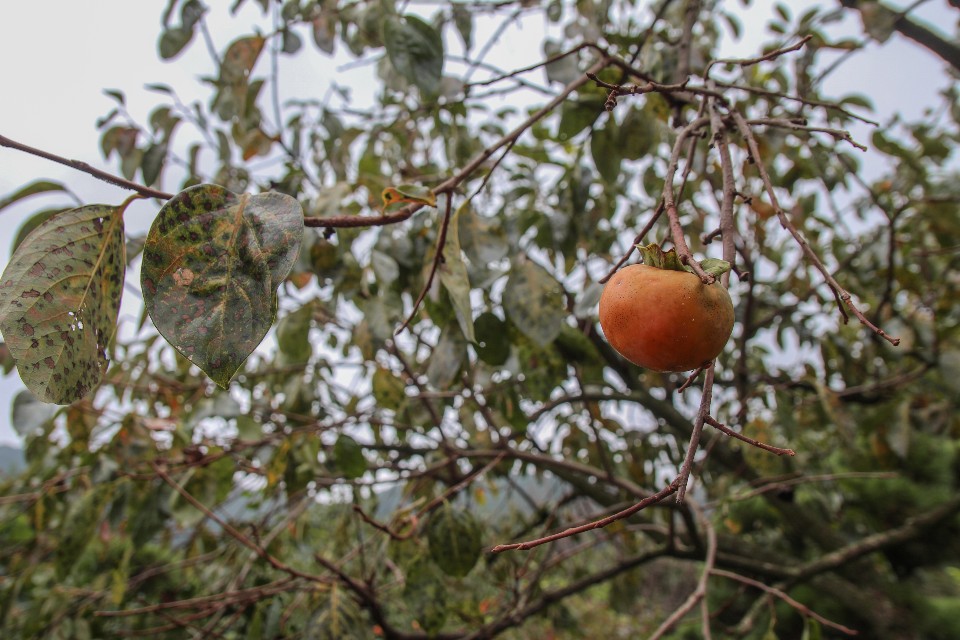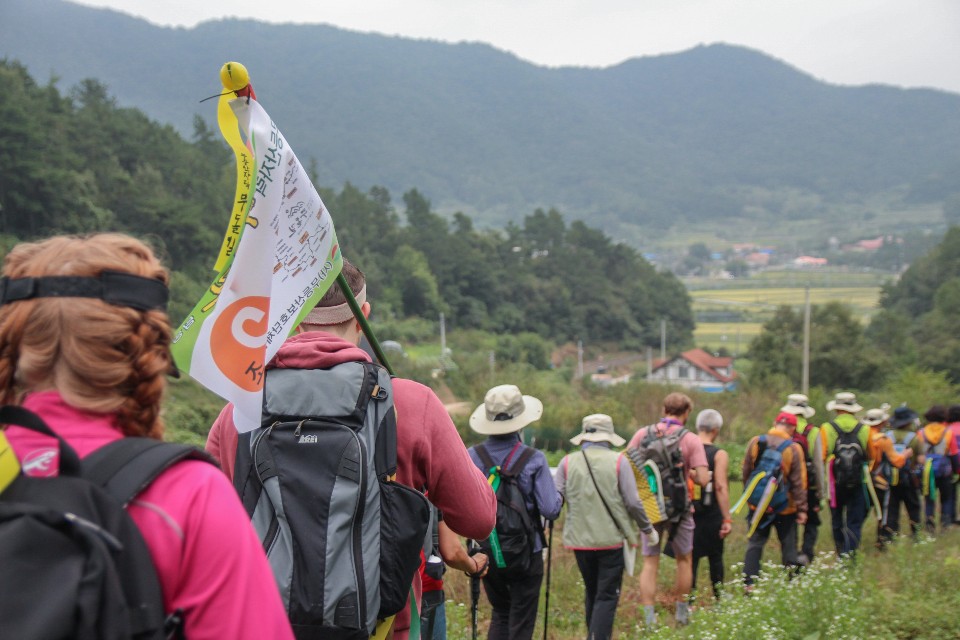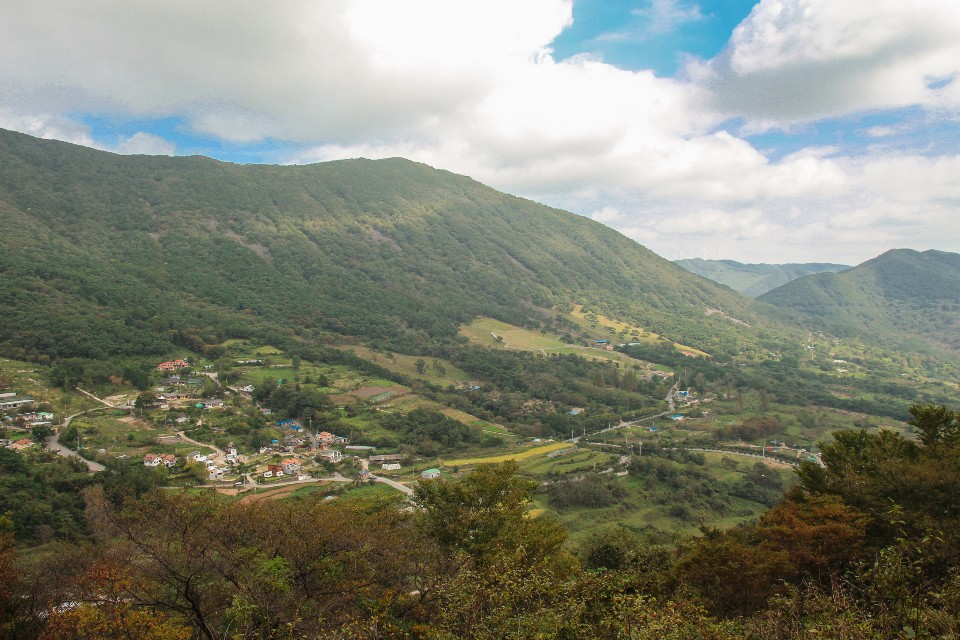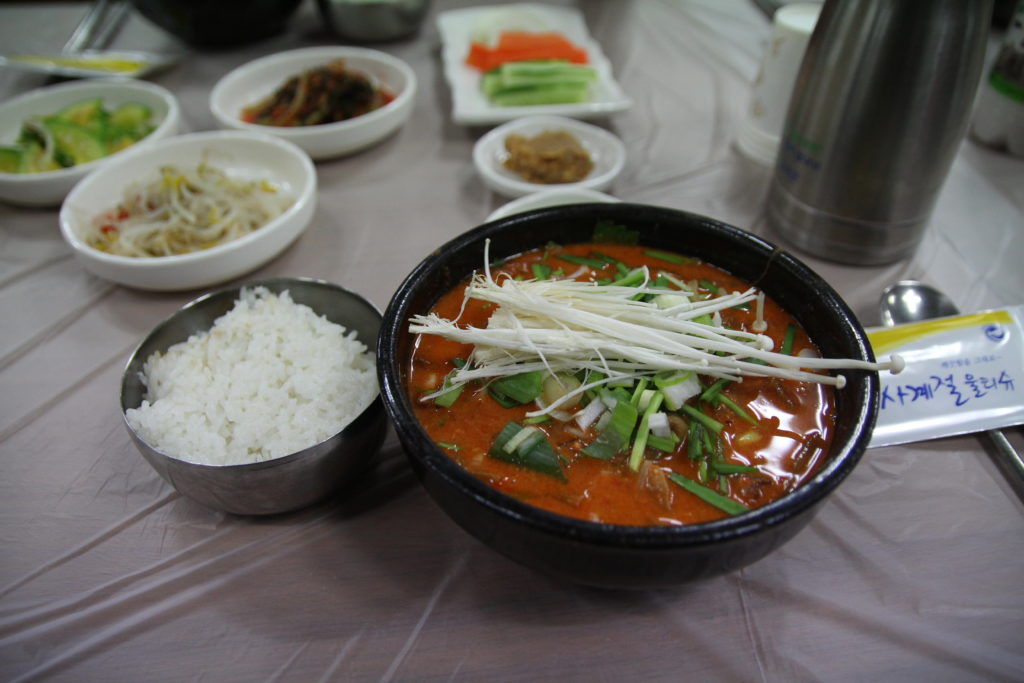Mudolgil, Gwangju’s Camino de Jeollado
Written by Ian Knecht.
Some of us fantasize of trekking across the Spanish countryside on the Camino de Santiago. For those of us living in Korea, how about the Mudolgil? The Mudeung Mountain Conservation Council (무등산보산보호단체협의회) offers a guided tour of the Mudolgil (무돌길) every spring and fall to increase awareness and advocate conservation efforts around Mudeung-san National Park (무등산국립공원). The Mudolgil is a trekking path that circles all the way around Mudeung Mountain. This fall’s semi-annual outing took place on the weekend of October 5–6, and it began with a minor procession. We divided into rank and file, carrying flags for the fun of it. Our event coincided with a local band practice in the park below the reservoir, so after enjoying some impromptu fanfare from a troupe of saxophonists, we were off.

The whole first day, it looked like it was about to rain, but only a few scarce drops ever fell. Clouds draped the surrounding hilltops mysteriously as we made our way through the Damyang countryside. The air was cool and refreshingly misty, seemingly primeval. Our path meandered in and out of rice fields, traditional stone-walled village alleys, and forests of chestnut, pine, and oak. Persimmon, pomegranate, and apple trees shrugged under the weight of ripening fruit.

Break times were frequent, as our guide would halt us to lecture about the history of each site we visited. Luckily, a few Korean and English speakers were there to interpret. We learned chiefly that the Mudolgil consists of a collection of very old walking paths that once connected the small farming communities surrounding Mudeung Mountain and served the practical purpose of ferrying goods and laborers through the mountainous terrain.
Whether or not we understood the full significance of our path, it was akin to a Camino de Jeollado, and its scenery was immediately enjoyable. A pattern of hour-long walks with short snack and drink breaks followed throughout the whole trip. Break times were full of sharing. Everyone was generous with snacks, fruit, kimbap, and cups of makgeolli (막걸리), Korea’s sweet and fizzy rice wine. Likewise, all had open ears for stories as new introductions were made and old friends met.

As the sun fell behind the hilltops, we found ourselves in Hwasun-gun below the green slopes of Gyubong-am Temple and Anyang Mountain. Windmills towered out of the hills to our left. Many ended the day there with a quick shuttle to our pension, while a few dour souls hiked further uphill to arrive just before nightfall and just in time for dinner. We sat down to generous portions of heuk–yangtang (흑양탕), a thick, spicy stew of mutton, vegetables, and ground perilla seeds.
After eating our fill, we readied our sleeping quarters and went right back outside for some evening entertainment. Song sheets, a guitar, and an open microphone were made ready, and we sang together into the night. Folk songs commemorating Mudeung Mountain, old Korean pop ballads, pansori (판소리, Korean musical storytelling), and even The Beatles were featured in our singalong.

It was admittedly a little hard to sleep in the pension. We weren’t accustomed to the coming, going, and snoring of a whole cohort of hikers under one roof. Still, it was nothing that an early rise, cup of coffee, and hansik (한식, Korean traditional food) breakfast couldn’t fix. Breakfast was a hearty platter of grilled mackerel, side dishes, and rice. After a bit more coffee, we stepped across the road for a brief appreciation of the Mudeung Mountain Cypress Groves (무등산편백자연휴양림). The cypress trees’ fir-like branches blocked out a lot of sunlight and preserved the humidity, giving the atmosphere a rejuvenating effect. As we made our exit from the grove, a clear autumn sky revealed the valley below. Our path next took us down into the valley below Anyang Mountain. There we took an extended break where all the members of our group made their introductions – even we the foreign guests mustered our best Korean to give thanks.

Again, we were off straining our legs uphill to the nearby pass called Keunjae, which translates to “Big Pass.” It’s a high place with panoramic views of the mountain valley on one side and Hwasun on the other. A scrumptious kimbap lunch awaited us. Here we shared the remainder of our snacks and began a final, steady climb along the wooded slopes of Manyang Mountain. We were covered by the shade of the forest with intermittent break-outs of stony clearings on the mountainside. These treeless patches of tumbled boulders offered us each time ever higher views of the valley below. Some ambled up with bellies full of makgeolli, and others scaled the grade with gusto.
Officially, our start in Buk-gu and end point in Dong-gu are connected by a path that leads through the city of Gwangju, though being contented to have hiked the most scenic portions of the trail, we stopped in Gyodong Village (교동마을). Fanfare was in order once again. A trot band played old Korean classics. The singers, guitar, bass, and drums echoed through the local park. We all received a commemorative bandana and were offered our fill of rice cakes, ice cream, and more makgeolli. The celebration was cut short when a monk from the adjacent temple came out to say, “Be quiet!” and doused the celebration with a bucket of water. And so, everyone went back home to rest up for Monday morning and the promise of an invitation to come again in the spring.
If you fancy an old-timey, rustic walkabout at a leisurely pace, you can walk with us next time.
The Author
Ian Knecht is an English teacher, outdoorsman, and world culture enthusiast residing in our very own Gwangju. He’s happy to meet new people out in the woods. Ian originally hails from Erie, Pennsylvania, in the United States. His longest hiking adventure was the Appalachian Trail in 2016.




